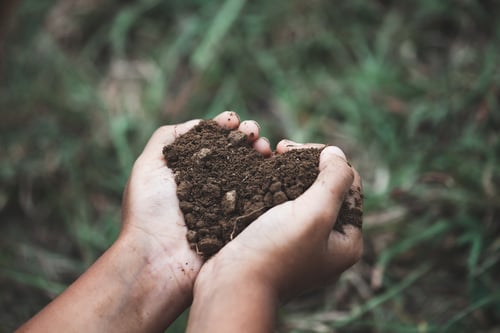
Compost Fertilizer and Its Production Methods
Compost production is a major part of waste management, as food and other compostable materials account for about 20% of landfill waste. Compost is an environmentally superior alternative to burying organic matter. Composting reduces methane emissions from landfills and offers economic and environmental benefits. Recent studies have shown that compost and its types can enhance water retention capacity, productivity, and soil resilience.
How is compost produced?
Compost fertilizer is a mixture of materials used as plant fertilizer and to improve the physical, chemical, and biological properties of the soil. Compost and its types are rich in plant nutrients and beneficial organisms such as bacteria and fungi.
Why do we need compost?
The decomposed material often resembles fertile garden soil. Compost contains the three primary nutrients needed by crops: nitrogen, phosphorus, and potassium. It also contains other essential elements such as calcium, magnesium, iron, and zinc. Instead of using synthetic fertilizers that contain harmful chemicals, compost and its types offer an organic alternative.
Benefits of Using Compost
Compost, often referred to by farmers as “black gold,” is rich in nutrients and can be used in gardening, farming, mushroom cultivation, and plant growth. Some of its benefits include:
– Enriching the soil
– Retaining soil moisture
– Helping suppress plant diseases and pests
– Reducing the need for chemical fertilizers
– Encouraging the growth of beneficial bacteria and fungi that decompose organic matter into a nutrient-rich material
– Reducing methane gas and carbon emissions from landfills
Key Tips for Making Homemade Compost
Four factors affect the speed of organic decomposition in compost production:
1. Oxygen: Composting is an aerobic process, meaning oxygen is necessary to decompose organic materials.
2. Organic Matter: Compost piles should contain a combination of nitrogen-rich (green) and carbon-rich (brown) materials.
3. Water: Moisture is important for compost production. Ideally, it should feel damp. Since 50–60% of food waste is water by weight, it provides significant moisture.
4. Temperature: Organic matter decomposes faster at higher temperatures, meaning an active compost pile remains warm even in cold weather. Turning the compost generates more heat.
Materials Not Suitable for Composting
The following materials should not be used for composting because they can lead to spoilage, eliminate beneficial microorganisms, and spread disease:
– Meat, fish, and poultry waste
– Dairy products
– Metal or plastic
– Fat, grease, or oils
– Processed foods
– Plants with visible diseases or pests like powdery mildew or aphids
– Human feces
– Dead animals or pet waste
What Can Be Used for Composting?
Homemade composting using kitchen waste reduces the volume of household waste. Instead of chemical fertilizers, you can use homemade compost to enrich the soil in pots and gardens. Some materials used in composting include:
– Eggshells
– Vegetable scraps
– Coffee grounds
– Tea leaves
– Cardboard, paper
– Tree leaves
– Used tea and coffee bags
– Fruit peels
– Dry branches
Methods of Compost Production
The simplest way to make compost is to mix carbon-rich (brown) and nitrogen-rich (green) materials with plenty of air and water. Green materials include leaves, grass, and food waste. Brown materials are woody and carbon-rich, such as stems, paper, and wood chips. These materials break down into humus over several months.
Compost production can be a multi-step process with careful monitoring of water, air, and the balance of carbon and nitrogen. Decomposition is aided by chopping plant materials, adding water, and ensuring proper aeration by regularly turning the mixture.
Steps for Making Compost
1. Prepare a location for composting (preferably shaded and moist).
2. Choose a suitable container for compost production.
3. The bottom layer of the compost pile should be bare soil. Add branches or straw to aid drainage and aeration.
4. Add alternating layers of moist (food waste) and dry (leaves or straw) materials to the soil.
5. Adding fertilizer or another nitrogen source is important in compost production.
6. Keep the pile moist by watering with a hose or sprinkler.
7. Cover the pile with plastic sheets, wood, or tarps.
8. Finally, turn the pile every few weeks to introduce oxygen. Compost is ready when it is dark, rich, and the original contents are no longer recognizable.
